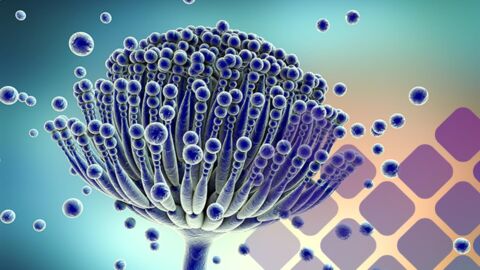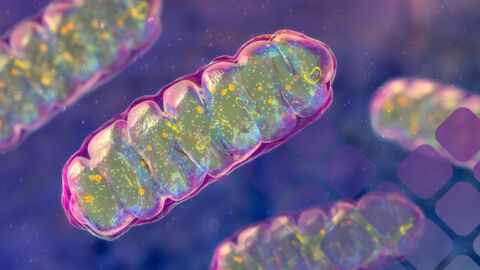On September 15, 2023, MosaicEDGE hosted the Discovering the Power of the Organic Acids Test: A One-Day Seminar on OAT Fundamentals live-streamed online. The following Q+A is a grouping of responses from the workshop presentations.
The material contained within this article is not intended to replace the services and/or medical advice of a licensed healthcare practitioner, nor is it meant to encourage diagnosis and treatment of disease. It is for educational purposes only. Any application of suggestions set forth in the following portions of this article is at the reader’s discretion and sole risk. Implementation or experimentation with any supplements, herbs, dietary changes, medications, and/or lifestyle changes, etc., is done so at your sole risk and responsibility.
Kurt Woeller, DO
Q: If someone has high levels of both 3-hydroxybutyric and 4-hydroxybutyric, with all other fatty acid and amino acid markers okay, can this part of a pattern?
A: 4-hydroxybutyric is linked to a different pathway involved with gamma-amino-butyric acid (GABA) metabolism. I do not know of any associated with fatty acid metabolism.
Q: Are there any specific markers to look out for PCOD?
A: Not on the OAT that I know of.
Q: Lactic acid, what about zinc as the cofactor for the metalloenzyme, lactate dehydrogenase, and with a Zn deficiency, as a culprit in lactate being elevated? After all, the WHO will even tell you that 2 billion people have a gross deficiency, but what about a marginal Zn deficiency regarding the LDH enzyme with high lactate?
A: This could be another associated factor.
Q: You mentioned that Oxalates can damage the mitochondria. Does that mean foods with oxalate components could damage the mitochondria as well? When should oxalate poisoning be considered a primary concern?
A: Yes. Foods are the main source of oxalate. It doesn’t matter the source of the oxalate that leads to its potential adverse effects on mitochondria function.
Q: I work with the transgender population – is the sex difference in reference ranges based on current hormone status or chromosomal sex?
A: The reference ranges are based on chromosomal sex. As it pertains to the OAT, most practitioners use sex at birth and then interpret the test with the interventions that are/have been done. We are looking into current research on this but at this time there is simply not enough information to provide a more specific or concrete answer.
Q: How much does an Organic Acids Test result change day to day?
A: Not very much. There may be normal fluctuations for most values based on daily activity and metabolism.
Q: Do markers 2, 4, 5, 6 mean colonization is present, past, or either?
A: It means there is current colonization in body. Whether there is current exposure would need to be assessed from other testing such as environmental, e.g., home inspection.
Q: The Clinical Significance manual shows 4-Hydroxybutyric acid under the fatty acid section, but on a recent client’s result, it’s listed as the last amino acid metabolite (75) and is not shown under the ketone/fatty acid markers. Can it be applicable to both?
A: Nothing that I have come across indicates it to be linked to a fatty acid metabolite problem such as acetoacetic of 3-hydroxybutyric (although, 4-hydroxybutyic is similar in structure to 3-hydroxybutyric and 2-hydroxybutryic).
Q: Are there any restrictions or inaccuracies when testing pregnant women?
A: Not that I am aware of.
Q: Is it possible to have oxalate accumulation but not show out of range in urine because the person is not excreting the oxalates effectively?
A: Yes.
Q: Good evening. Thank you for the explicitly descriptive talk on OAT. I’ve noted that practically all patients demonstrate a deficiency of vitamin C, why is this?
A: I see this a lot too, although not all. Some reports indicate that ascorbic acid degrades quickly in urine, but I am more inclined to see it as a lack of adequate vitamin C in circulation, particularly when correlated to a patient’s condition. Personally, I supplement for C when I find it low.
Q: What would low Aconitic mean?
A: There is no known clinical significance.
Q: If their fat acid oxidation is very high due to diet- do they need to stop diet or need L-carnitine? In other words, will it cause harm by not doing anything about it?
A: L-carnitine is useful. Harmful effects are mostly possibilities, i.e., sequestering of L-carnitine. This is why L-carnitine is worthwhile. You need to find out what benefit is occurring from diet.
Q: How do I know if is folate or folinic that I must use in supplementation? Which markers will help me to know if is one or the other?
A: There is nothing on the OAT that specifies this. The high Uracil or Thymine could be from deficiencies of either one.
Q: Can you comment on the Organic Acid Test to assess the dopamine pathway and low libido relationship?
A: The dopamine metabolites are well established on the OAT. Making a correlation to low libido could be associated, but not confirmatory. The OAT shows patterns, but each test needs to be applied to the unique circumstances of the individual.
Q: Can you please tell us why L-carnitine is so helpful?
A: L-carnitine aids in moving long-chain fatty acids into the cell to be used as a fuel source for ATP production. It also has antioxidant properties.
Q: Can IV Ozone therapy be utilized in conjunction with any of the treatment modalities?
A: I do not do ozone therapy, so not sure.
Q: Is #8, Carboxycitric a mold or yeast marker?
A: This marker is from yeast.
Q: So, can Methylene blue work on chronic candida and break up candida biofilms? After all, it is a killing agent. So any experience or results using low dose, MB, and if so any recommendations on dose or the hormesis effect when employing MB?
A: I am not sure about Methylene Blue and biofilms.
Q: Are there restrictions for us NYS users?
A: Due to NYS regulations, we are unable to perform any testing within the state. We recommend completing testing in a neighboring state if possible.
Q: Using Nyastatin for two months didn’t combat Candida. What herbal supplements are effective in eradicating Candida?
A: There are many. Take a look at the products from BioBotanical Research and their Biocidin.
Q: What is the difference between the MycoTOX Profile and the OAT fungal markers?
A: Mycotoxins are chemical toxins from mold. The OAT mold markers are different metabolites of mold metabolism.
Q: What can you do for candidiasis overgrowth herbal treatments in children (due to excess antibiotics) or is diflucan most effective?
A: I like botanicals and use a lot of Biocidin from BioBotanical Research.
Q: Using Nystatin for two months didn’t combat Candida. What herbal supplements are effective in eradicating Candida? and How long should supplements be withheld before doing the test?
A: I do not recommend withholding supplements prior to testing other than what the lab recommends.
Q: Which markers indicate yeast/mold in the gut vs systemically?
A: The markers on page #1 are linked to the gut. There is no marker that is absolutely confirmatory of systemic candida.
Q: As a prescribing physician, can I use the OAT results as the basis for my prescription? For example, if there are many aspergillus or candidal markers on a patient’s test that could indicate an overgrowth, can I use the OAT test as an evidenced-based medicine RX for Sporanox?
A: I do, and many others do. I cannot guarantee that some licensing board or insurance company will always agree. They tend to act often on their own with regard to treatment approaches. Look through the resource section of the MosaicDX website for articles and literature references regarding the OAT and its fungal markers. There is a lot of evidence available.
Q: I have a client with Candida parapsilosis 2+ on stool test. Can you elaborate on this organism – source, pathogenicity, treatment, etc?
A: You need to do some research on the organism.
Q: You didn’t mention any dermatological conditions as a result of chronic candidiasis. I thought that was something pretty common. Thoughts?
A: This can certainly be a problem.
Q: So biofilms can create a sudden decline in oral health, how can we break this down?
A: Check out the information from BioBotanical Research.
Q: Do you prefer nystatin or fluconazole on the whole?
A: Nystatin overall, but Diflucan for more broad effects clinically beyond just gastrointestinal candidiasis.
Q: The liquid suspension has a lot of sugar, which seems counterproductive for yeast that like sugar.
A: You can get the Nystatin compounded from a pharmacy.
Q: Due to ongoing symptoms have been using caprilic acid effectively, have you tried this?
A: Some, but not enough to say it is better overall.
Q: What are your thoughts or experience with Itraconazole for fungal / mycotoxin load?
A: Very good.
Q: What throat spray do you like?
A: Biocidin Throat Spray is excellent.
Q: similar to the pulsing of the botanicals and antimicrobials q3 days, do you then pulse q3 days for nystatin or fluconazole or sporonox if you continue beyong the initial 30/14 days of daily dosing?
A: I do not pulse antifungals. I only pulse botanicals or antibiotics for recurrent clostridia
Q: How often would you say a “candida diet” is necessary (aka no fruit or natural sugars or starches)?
A: A whole food/real food diet is always necessary.
Q: Do you treat patients with mildly elevated yeast, mold and clostridia markers with only a 5-10% elevation? What is the cut-off point to treat?
A: I treat everyone with an elevated value.
Q: 68 yo wf with previous treatment for C. difficile and then with Candida. Recent onset of multiple small patches of eczema. Is it likely that the Candida will return?
A: Probably.
Q: If the Organic Acids Test is normal in clostridia markers but GI test is positive for C. diff toxin A&B with a client with heavy metal toxicity – numerous metals, at what point do you treat the C. diff? After addressing metals or at the same time? What natural treatments do you recommend?
A: I would treat the C. difficile in this case because of the positive stool markers. I would address metals after C. difficile treatment.
Q: The values for C. diff need to be within the orange bar, or the lower the better?
A: For most everyone, I treat clostridia specifically if the values are above the 2nd standard deviation line and highlighted in red. However, if your clinical suspicion is elevated linked to clostridia then I would follow your instincts and perhaps treat.
Q: Why will you will find more clostridia on the OAT than in stool testing?
A: The test is more sensitive to the existence of clostridia toxins overall.
Q: Have been advised to first treat the C. diff, first, then the Candida. Also used Biocidin and grapefruit seed extract in a pulsed fashion. Can this be effective?
A: I do not pulse antifungals, but will for recurrent clostridia. If you are using botanicals and probiotics for clostridia, you likely are going to have a positive effect against candida too.
Q: May have missed this but the most common cause or contributor of Clostridia in little kids?
A: Environmental exposures. Their hands are into almost everything and often into their mouths too.
Q: Thoughts on high doses of S. Boulardii for Clostridia infections / overgrowth?
A: Have not done it as an isolated treatment. It might work, just no experience. Could be used in combination with other things.
Q: What are the botanicals you use in place of meds for clostridia specifically HPHPA forms?
A: Because most people don’t tolerate medications, don’t want medications, cannot get medications, and often don’t need medications. Botanicals and probiotics most often are successful.
Q: If oxalic and glyceric acids are okay, but glycolic acids are elevated, could this be from something other than oxalates?
A: High glycolic can occur from a need for additional Vitamin B6. Certain foods, e.g., fruits, can have glycolic.
Q: Is it possible to dislocate oxalate that’s in the tissue, particularly from the brain?
A: Evidence does show that oxalate crystals can dissociate. It seems possible that it could occur from any organ.
Q: Would running the OAT be helpful in people with recurring kidney stones?
A: Yes. Absolutely.
Q: Is it possible for a person to have oxalate accumulation even if normal or normal/elevated oxalic acid because of not being able to effectively excrete oxalates in urine?
A: Yes.
Q: I have a client with high Quinolinic Acid and his only real symptom is 15 years of all-over muscle pain. Have you seen this as a correlation?
A: No, I have not.
Q: Anything to watch for with high normal quinolinic acid (3.2) to make sure it doesn’t get to high level?
A: Niacinamide may be helpful.
Q: Do you have experience or an opinion on the use of TUDCA for neuroinflammation and for encouraging autophagy?
A; I have heard about this, but no direct experience.
Q: Does low pyroglutamic acid mean anything, especially if you have high homocysteine levels?
A: No known clinical significance.
Q: Do you ever worry about NAC causing decreased zinc levels?
A: I do not know about this.
Q: Can you advise about increased quinolinic acid in 4-year-old MTHFR, COMT SNP with new-onset seizures? What is the best way to approach the reduction of quinolinic acid?
A: Try to determine the cause, i.e., infection, stress, possible B3 deficiency.
Q: Any side effects or contraindications to lithium?
A: Too much could lead to thyroid issues. Read Dr. Greenblatts book on nutritional lithium.
Q: Are there OAT patterns that would point you in the direction of SIBO?
A: The OAT is suggestive of SIBO, particularly when multiple markers are elevated in the bacterial metabolite section. Also, 4-hydrophenylacetic elevations may be associated too.
Q: If you had evidence of parasites on a stool test, and/or elevated eosinophil %, and also had evidence of a Clostridia overgrowth on the OAT, which would you prioritize?
A: I would treat the parasite first, then go after the clostridia. But, if the patient is extremely sick from the clostridia then this would take priority, particularly if the parasite is not highly pathogenic.
Q: What’s 1 good complimentary test to the OAT, to confirm: dysbiosis and leaky gut?
A: Comprehensive digestive stool analysis.
Q: Cutaneous manifestations of any of these organic acid elevations?
A: Check out Julie Greenberg, ND’s webinar through MosaicDX on the OAT and dermatology conditions.
Q: If the elevated fatty acid makers are from diet, ie excess coconut oil consumption, or ketogenic diet, do you still supplement with L-carnitine?
A: Yes, I would.
Q: Given that the ETC represents 90% of energy production, are there any direct insights or clues within the OAT test for ETC function (or dysfunction)?
A: Nothing directly that I know of, except for the CoQ10 marker. Other markers are only associated with problems like high glutaric (low B2). I am researching other markers to see if things could be added.
Q: Are there any markers that can provide clues for Penicillium mold?
A: Aspergillus and penicillium often hang out together, so the Aspergillus markers could be reflective of penicillium too.
Q: Do you feel hair testing for heavy metals is as accurate as spot urine tests for heavy metals? Which company do you like to use for the hair testing?
A: Spot testing is usually not accurate for heavy metals unless there is current ongoing exposure. Or, if a baseline and then provoked urine is collected. I do the MosaicDX Hair Analysis which comes from Doctors Data.













